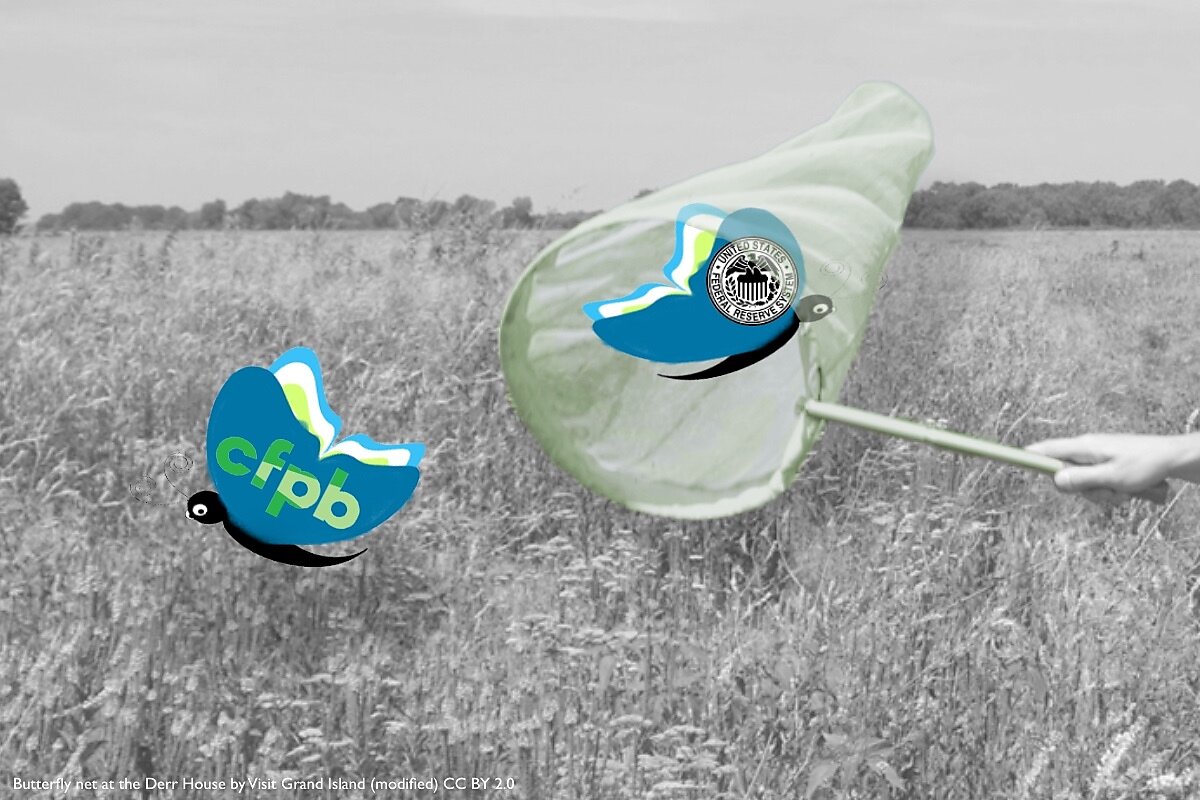While still largely ignored within mainstream academia, the central framework of Public Choice theory, that actors in the political realm pursue rational self-interest, appears to have been largely embraced by popular political commentators from Senator Elizabeth Warren to Presidential Candidate Donald Trump. The notion that “the system is rigged” clearly resonates with the public. For some the obvious solution has been to further insulate regulators from the political process: witness the structure of the Consumer Financial Protection Bureau (CFPB) created by the Dodd-Frank Act.
The “protecting” of regulators from the political process is, however, based upon the belief that the “correct” policy is obvious and is simply being blocked because regulators are “captured” by those they regulate. Insulate the regulators, and like magic, you get the right policy.
A challenge to this argument is the performance of the Federal Reserve, arguably the most independent of regulators. Yet its performance before and during the crisis has been widely criticized. The creation of the CFPB was in part a reaction to the perceived failures of the Fed in the area of consumer protection (for a counter argument, see Bernanke’s recent book). Capture at the Fed is often invoked as resulting from having bankers on the regional bank boards, but the consumer protection rules were not written by the regionals but by the Washington-based Fed board.
If not direct capture, then invoked is the notion of “cognitive capture” in explaining the Fed’s (in)action. In this instance the Fed comes to identify with the values and world view of Wall Street and/or economists. There is much merit in this view, and I certainly see it as a fact that “regulatory capture has resulted in an excess sensitivity of the Fed to financial market and financial sector concerns and fears and in an overestimation of the strength of the link between financial market turmoil and financial sector deleveraging and capital losses on the one hand, and the stability and prosperity of the wider economy on the other hand (Buiter 2008).”
But this type of capture does not seem to come from a “revolving door” or Congressional pressure or any of the standard avenues. It appears to come from the transmission of information.
Regulators rely on external parties, often industry, to gather information about the health of the economy and about the impact of regulation on the economy, as well as on specific industries. The problem of representativeness bias, however, arises in determining whether the information is indeed reflective of the overall economy. The NY Fed, for instance, heavily interacts with a small number of banks that are “primary dealers.” Such is a function of how monetary policy is currently conducted. If a primary dealer is experiencing problems and asking the Fed for assistance, the Fed may well conclude many other banks also need assistance. I would suggest this was indeed the case in 2008.
Bankers and economists are not the only parties subject to cognitive capture, nor the only parties able to project it. As there appears to be little evidence that America is suffering from a mandated arbitration crisis, one has to wonder why the CFPB has spent so much effort trying to eliminate it. Perhaps we shouldn’t be surprised that an agency staffed by lawyers is subject to cognitive capture by the general legal profession. The point is not that lawyers are any better (or worse) than economists, the point is that all of us are subject to potential cognitive capture. No one is immune.
Given that everyone is subject to capture, cognitive and otherwise, what structures can reduce this? One solution is, as Stephan Bainbridge has suggested, a board structure. Such could help bring diverse voices to bear on a problem, forcing policymakers to consider alternative viewpoints and recognize their own biases. In this sense, we should follow Cass Sunstein’s call for encouraging more dissent.
Recently Schnakenberg and Turner (2016) have formalized a model where attempts to eliminate capture by limiting influence (the CFPB model) results in less informed policymaking. Are our only choices biased, ignorant policymaking versus captured policymaking? Again here is where checks-and-balances can improve regulatory outcomes. For instance, the President’s Council of Economics Advisors has often stood as an independent voice within the executive branch against agency proposals favoring the constituents of said agency (for example see Hargrove and Morley 1984). The Office of Management and Budget has often served a similar role. External review of agency decision-making, whether by the Courts or independent bodies such as the GAO, offer some potential for reducing cognitive capture (See Seidenfeld 2002).
Attempts to require greater agency accountability have often been opposed as favoring special interests. Yet the notice and comment process under the Administrative Procedures Act (APA) has greatly leveled the playing field in terms of influencing agencies. Prior to the APA, agency rule-makings often looked like the machinations of an industry cartel. While the APA has undoubtedly increased the length of the rule-making process, it has also improved it, without inhibiting government’s ability to act. Ultimately expediency in government is the friend of special interests, not the public.
I’ve argued above that the most fruitful avenue for reducing regulatory capture is to impose more checks-and-balances on our agencies, reversing recent trends toward expediency. Of course in many cases, Fred McChesney had it right when he wrote, “the one unambiguous solution for reducing rent extraction is reducing the size of the state itself and its power to threaten, expropriate, and transfer.”
[This article originally appeared on Pro-Market, the blog of the Stigler Center at the University of Chicago Booth School of Business.]


